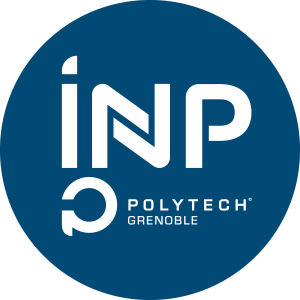Number of hours
- Lectures 10.0
- Projects -
- Tutorials 8.0
- Internship -
- Laboratory works -
- Written tests 2.0
ECTS
ECTS 0.2
Goal(s)
Show through some examples and illustrations the important role played by surfaces and interfaces within physical and physicochemical systems.
Describe the structure and morphology of surfaces and interfaces.
Understand the basic concepts that govern the mechanical and physico-chemical equilibrium of systems with interfaces.
Introduction to the physico-chemistry of surfaces and interfaces.
Presentation of the different models and their applications.
Study the properties of wetting and adhesion to interfaces and the special role of surfaces and interfaces in small systems.
Content(s)
Chapter 1: Generalities on surfaces, interfaces and interphases
1- Introduction
2- The surface and its defects
3- Adsorption
4- Simplified expression of the energy associated with the surface of a pure component
5- Interfaces
Chapter 2: Mechanical and physicochemical equilibrium of systems with interfaces
1- Introduction: intuitive approach to surface energy and surface tension
2- Thermodynamic approach to interfacial energy - relationship between interfacial energy and interfacial stress
3- Mechanical equilibrium of a heterogeneous system presenting curved interfaces: Laplace’s law
4- Equilibrium shape of a crystal: Wulf diagram
5- Interfacial energy and segregation
Chapter 3: Wettability and Adhesion - Applications
1- Introduction
2- Wetting equilibrium - Young relation
3- Measurement of the contact angle by the deposited drop method
4- Work on adhesion (Young and Dupré relationship), work on cohesion and immersion
5- Applications: capillary rise - Jurin's law, infiltration kinetics - Washburn relationship
6- Capillarity versus gravity (shape of liquid droplets)
7- Wetting of real surfaces: effects of roughness and heterogeneities
8- Measurement of surface energy
9- Non-reactive wetting, reactive wetting
10- Examples of wetting in different systems
11- Assembly of materials by brazing process
Basic notions of the thermodynamics of solutions and phase equilibria (free energy, free enthalpy, chemical potential, chemical activity, chemical equilibria, phase equilibria diagrams).
Basic notions in materials science and engineering (different classes of materials, microstructures and properties
associated).
Basic notions of crystallography (atomic structure, crystallographic plane and direction, Miller indices).
Normal session:
Type of assessment: written exam
*Recoverable assessment:
Type of assessment: written exam
Duration: 2 hours
Authorized documents: a double-sided A4 sheet of handwritten notes
Calculator: allowed
Possible remotely: no
- Evaluation not recoverable: no
- Second session:
Type of assessment: written exam
Duration: 2h
Authorized documents: a double-sided A4 sheet of handwritten notes
Calculator: allowed
Possible remotely: no
The course exists in the following branches:
- Curriculum - MAT - Semester 7
Course ID : KAMA7M14
Course language(s): 
You can find this course among all other courses.
- Gouttes, Bulles, Perles et ondes. PG. De Gennes, F. Brochard-Wyart, D. Quéré. Édition Belin, Collection Echelles, 2005
- Chemical Thermodynamics of Materials. CHP. Lupis. Elsevier Science Publishing Co., 1983
- Wettability at High Temperatures. N. Eustathopoulos, N. Nicholas, B. Drevet. Pergamon Materials Series, Elsevier, Amsterdam, 1999
- Surface tension and adsorption. R. Defay, I. Prigogine. Longmans, 1966
- Eléments de Métallurgie Physique. Y. Adda, J-M. Dupouy, J. Philibert; Y. Quéré. Tome 4, Chap. 29. Edit. CEA-INSTN, France, 1987
- Endommagement interfacial des métaux. G. Saindreman, R. Le Gall, F. Christien. Ellipses, 2002
- Interfaces in crystalline materials. A.P. Shutton, R.W. Baluffi. Clarendon Press, 1996



